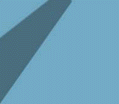In this article:
The difference good web design can make to your website
1. A website needs a strong identity even more.
2. Creating a powerful identity for your web site.
Other Articles:
Building Web Sites With Depth
Design and Redesign Disasters
Don't Make Them Wait
|
It all started in the supermarket. Which supermarket? Any supermarket. How one manufactures markets and advertises their products, how marketers get their products displayed upon the shelf. How marketers get customers to respond to their products. Instantly. Positively.
Successful supermarket products and corporations have strong visual identities that make them distinctively different from all others externally -- and homogenous within.
Well-designed magazines and newspapers also have 'house styles' that set them apart from the competition and gives each page a visual relationship to others within the same publication. It may be the typography, the use of a color scheme, a constantly applied graphic device or any combination of these but the effect is the same - to hold the whole thing together and separate it from everything else.
A website needs a strong identity even more.
Because of the nature of the web, and the ease with which you can jump from one site to another, it is very easy to get lost in the crowd. Add to that, the unifying effect imposed by the restrictions of HTML layout and the general lack of consideration given to the 'look' of pages because they were constructed by people trained in the technical aspects of web page creation, but not necessarily in the aesthetics or psychology.
The easy thing to do, to make your web page look like a 'web page', is to follow convention. Banner along the top, menu down the left hand side. It works. Everybody does it. Have a look at any of the popular news sites, they are now starting to look the same because someone has come up with a formula and it is being adopted, adapted and regurgitated again and again.
In any design task - a building, a car, a web page - there are two considerations. The first is the practical one. Does it work? Cars tend to look similar because they have a wheel at each corner, seats in the middle and a roof on top. Although there are minor variations from time to time, the look of a car is dictated by its functionality.
Then there is the stylistic aspect. How can one car that is functionally and mechanically identical to another be so much more desirable? The fact is that it is not just a machine, it is an extension of the owner's personality and creates an emotive response in anybody who looks at it.
You can't separate these two factors, if you get either the mechanics or the style wrong, you have a flop on your hands.
With a web page, you have the 'mechanics' of getting the HTML right to provide the 'function' of getting the message across. The 'style' provides a more subliminal communication, but it's just as important because it can reinforce, or contradict what you are saying. It is the 'tone-of-voice' of the message.
A strong visual identity is, by definition, a bold statement but the trouble with making such a positive statement is that it has to be the right one. Its strength can also be its weakness because it will tend to polarize opinion. People will either love it or hate it. Strong personalities don't give birth to indifference.
But don't confuse a strong statement with a loud statement, there is a world of difference. It's the tone-of-voice thing again. It is better to communicate clearly, with quiet confidence than to yell your head off about something that is probably not worth saying in the first place. A flashing animated GIF may attract attention, but then so does a hornet!
In creating a powerful identity for your web site, it will become both noticed and remembered.
It should be distinctively different from other sites and that means coming up with a unique visual vocabulary, a style that is both appropriate and sympathetic to the message. A marble background is great, if you have a site about stone-masonry or bathroom fittings. If you are using it because you think it looks nice, think again, it's a cliche. Web page cliches are the leopard's spots, the battletank's irregular markings. They contrive to make you site blend-in rather than stand-out.
The web is not like a newspaper or television channel, it is much more like a magazine stall with a plethora of diverse interests.
You probably have competition. Somewhere on the web, there will be one or more sites with similar subject matter to yours attracting the same audience. Look at them and see what you should NOT do.
Packaging designers have to design packs that stand out from the competition on crowded supermarket shelves. They will try to recreate that situation in the studio by buying all the competitive products and lining them up with their prototype designs. Every pack is vying for visual dominance by being bigger, brighter or tastier than the ones around it. You can try to out-dominate all the others or, be clever, and change the rules completely. Don't put your shampoo in a plastic bottle, put it in a can! All of a sudden, you have created a unique product that stands out from the crowd because you have dared to be different.
Having created that kind of difference for your web site, stand back and watch. It won't be long before the 'me-toos' spring up!
TO TOP |




